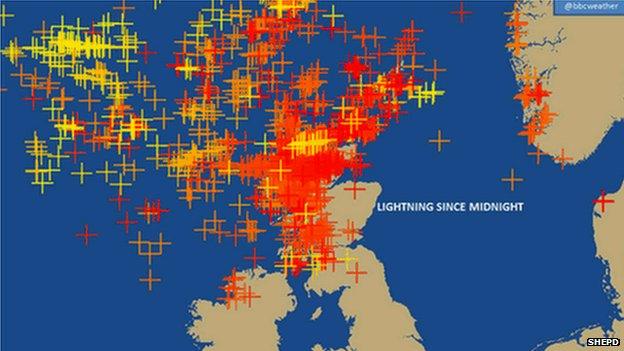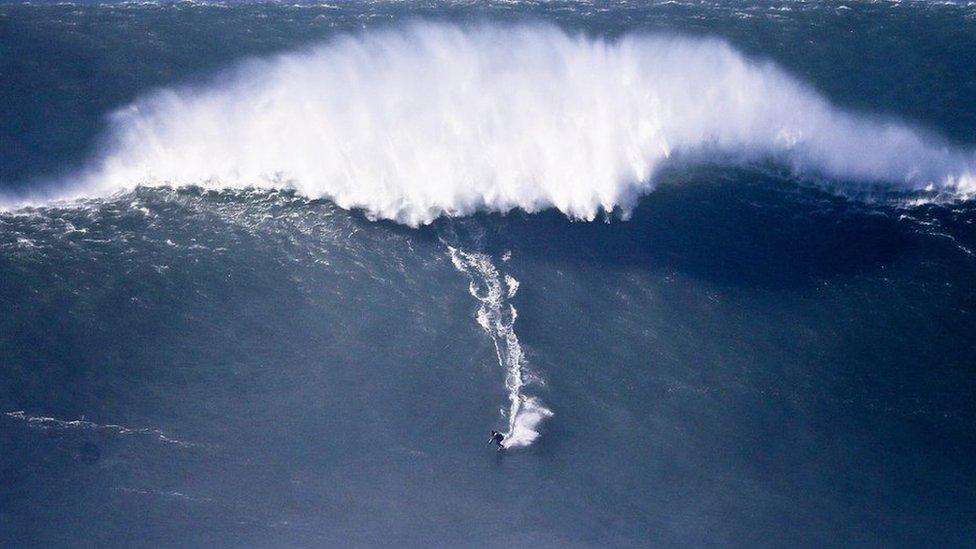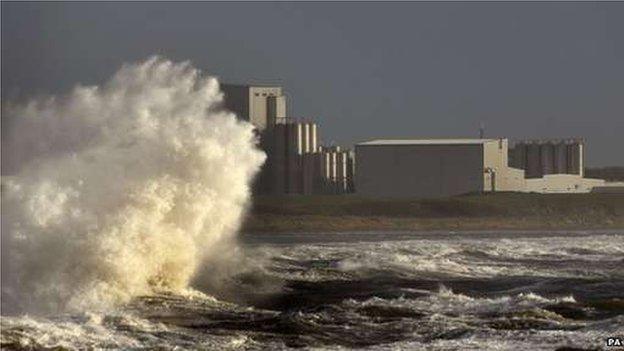Lightning struck 5,000 times during 'weather bomb' storm
- Published

A SHEPD graphic of lightning strikes in Scotland
Lightning struck 5,000 times across the Western Isles and northern Scotland during Wednesday and Thursday, according to an energy provider.
Scottish Hydro Electric Power Distribution (SHEPD) said the strikes were the cause of the most damage to electricity supplies during the storm.
Tens of thousands of its customers in the Hebrides and parts of Orkney and Argyll lost power.
A strike near Fort Augustus cut power to Skye and the Western Isles.
SHEPD said an analysis of the electricity network had shown that, on average, there were more than 100 strikes each hour during the worst of the storm.
On Skye bolts struck six wooden poles on the transmission network.

Downed pole near Garron in Argyll and Bute

Lightning strikes at Stronsay on Orkney
SHEPD said where lightning struck equipment directly it added to the time it took to restore power to customers because new equipment had to be installed.
Alan Broadbent, director of engineering, said the company had brought in additional staff and resources ahead of the storm.
He said: "We knew that lightning would be a feature of this so-called weather bomb but predicting the intensity and frequency of strikes is almost impossible.
"We have equipment that can protect against lightning strikes, however, every so often a strike is too intense for even the most advanced level of protection."
The Atlantic storm hit Scotland late on Tuesday and during Wednesday and for a time on Thursday.
The Western Isles, Orkney and Shetland and parts of the north and west mainland coast were the worst affected.
The storm started in the Arctic where it had rapidly developed in strength in a process known as explosive cyclogenesis, or what some scientists and forecasters refer to as a "weather bomb".
Pressure at the centre of the storm dropped quickly in the space of 24 hours as it passed by the south of Greenland on a strong jet stream running in excess of 230mph.
- Published11 December 2014

- Published11 December 2014

- Published11 December 2014
